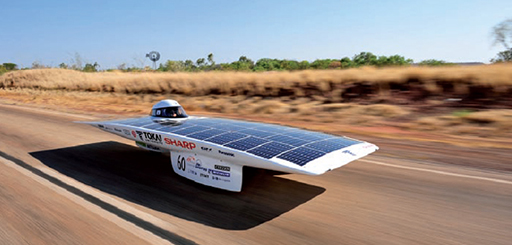2.4 Other thin-film PV technologies
Among the many other thin film PV technologies, some of the most attractive are those based on compound semiconductors, in particular:
- copper indium diselenide (CuInSe2, usually abbreviated to CIS)
- copper indium gallium diselenide (CuInGaSe2, usually abbreviated to CIGS)
- and cadmium telluride (CdTe).
Modules based on these technologies are in production from various manufacturers, with CIGS cells attaining the highest laboratory efficiencies of all thin-film devices, around 21%. CIGS modules with stable efficiencies over 17% are commercially available.
Cadmium telluride modules can be made using a relatively simple and inexpensive process, and efficiencies over 18% have been achieved under strictly controlled test conditions. But because cadmium is a highly toxic substance, stringent precautions need to be taken during manufacture, use, and eventual recycling.
Other thin-film and innovative technologies entering production or in development include multi-junction PV cells, in which there are layers of different p–n junctions, each ‘tuned’ to absorb light from a different part of the solar spectrum. An array of more than 2000 Sharp triple-junction PV cells, with a peak power output of 1.8 kW and an efficiency of 30%, was used to power the electric motors in the prize-winning Tokai Challenger solar car shown in Figure 4. It covered 2998 km in 29 hours 49 minutes at an average speed (during daylight) of 100.54 km per hour.

In another innovative approach, photoelectrochemical cells use dye-sensitised layers of titanium dioxide. Still at the research and development stage are ‘third-generation’ photovoltaic systems based on nanotechnology (technology based on the manipulation of materials at an extremely small scale, measured in nanometres) or using organic materials.
You’ll now look at concentrating PV systems.
